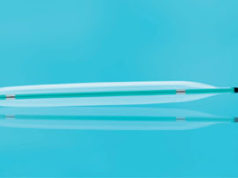
The 12-month results of Biotronik’s BIOFLOW-IV multicentre clinical study have been presented at the 2-17 Japan Circulation Society congress (JCS; 17-19 March, Kanazawa, Japan). The BIOFLOW-IV study is a prospective multi-centre, randomised controlled trial with a five-year follow-up. The positive results of this study support the submission for Japanese market approval.
The BIOFLOW-IV study included 579 patients from 12 Japanese sites and 34 non-Japanese sites. Patients with de novo coronary lesions were randomised in a 2:1 ratio (Orsiro, Biotronik: Xience, Abbott). Non-inferiority of the primary endpoint of target vessel failure was confirmed at 3.5% in the Orsiro arm and 4.2% in the Xience arm respectively, at the 12-month mark (p-value: 0.0001).
Shigeru Saito, director of Cardiology and Catheterization Laboratories, and vice president of the Shonan Kamakura Hospital, Kanagawa, Japan, commented, “In the BIOFLOW-IV study, the excellent efficacy and safety profiles of Orsiro was confirmed. This outcome is consistent with the outcomes of other Orsiro clinical studies conducted outside Japan.” The coordinating clinical investigator of this study continued, “I look forward to seeing Orsiro obtain premarket approval from the Japanese government and being made available to Japanese patients.”
Widely used in Europe, Orsiro has consistently displayed its effectiveness and safety in numerous clinical trials, enrolling more than 32,500 patients to date. The BIOSCIENCE trial, published in the Lancet, proved most similar to the BIOFLOW-IV study, according to a company release. It confirmed the non-inferiority of the Orsiro to the Xience stent family in a patient group reflective of a routine clinical practice.
Kiyotaka Iwasaki, cooperative major in Advanced Biomedical Sciences, Graduate School of Advanced Science and Engineering, Waseda University, Tokyo, Japan, says, “Ultra-thin 60μm Orsiro drug-eluting stent had no stent fracture in an accelerated 10-year durability testing performed at our institute. This device has potential to provide more benefits to long-term patients’ safety.”









